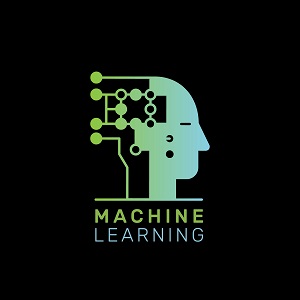he automation revolution businesses are seeing in the 21st century is comparable to the industrial revolution of the 18th century. Automation refers to the controlling of a system or process using minimal human assistance. Similar to how machines in factories forever changed efficient production, digital automation is now finding even more ways to work faster and smarter.
The life cycle of machine learning (ML) is defined as a circular process involving a pipeline development, training phase, or inference phase. Data scientists and engineers use ML to develop and train models in various applications. They are also able to make quick data-informed decisions without much human intervention.
Companies are able to save significant time and resources by automating manual processes. This reduces overhead and time-to-market while allowing data scientists to focus on creative tasks. Knowing the secrets to automate machine learning life cycles gives companies the ability to more efficiently gather data and make informed decisions. Digital tools are the secret to maximizing the impact of ML. The models that are being developed will also be used in various different ways that will either generate more revenue, make processes more efficient, or solve complex business problems.
Breakdown of the machine learning lifecycle
Machine learning models are broken into six steps. These are data access and collection, data preparation and exploration, model build and training, model evaluation, model deployment, and model monitoring.
The first step in a machine learning lifecycle is to identify ways to create value such as tangibly improving operations or increasing customer satisfaction. Next, it is important to collect all the relevant data needed. And then, to gain insights from the data a target variable must be determined.
Once the relevant data is gathered, then comes the task of analyzing it. This can get rather confusing for stakeholders and data scientists alike. Machine learning especially is known for being difficult to interpret and communicate insights to those, not in the field. The easier a model is to understand and interpret the more value it has to management, stakeholders, and consumers.
The importance of automating machine learning
Automated machine learning allows non-technical users in all fields to use, implement, and understand solutions with ease. This allows businesspersons and data scientists to spend more time focusing on complex problems that require more creative solutions.
Automation and machine learning work hand-in-hand. For example, the deployment of machine learning models would be very time-consuming if not for automating certain steps of the ML life cycle. Menial manual tasks that should be automated include training and retraining, monitoring, and feature engineering. It is crucial to automate steps in machine learning to increase output.
Automating machine learning is important to significantly reduce the time and effort it takes to train and implement machine learning models. Organizations with employees that have fewer computer science and math skills can use automation to more effectively collect and analyze data.
AI Integration
25% of organizations are already using AI in their process automation efforts, and 53% surveyed plan to implement it soon. Machine learning operations (ML-Ops) platforms are a great way for companies to integrate AI into their systems. These will remove traditional engineering burdens as well as automate menial tasks that can save time and money. Integrating AI also gives data scientists the ability to focus on more creative tasks rather than only focusing on engineering problems.
AI integration helps companies improve their processes and develop efficient products. They can also increase the range of capabilities of data scientists, allowing them to branch out from just prototypes into using complete data-centered suites. This allows data scientists to be supported in every step of development and production.
The constant use, upgrade, and acceleration of AI and machine learning will create countless opportunities for enabling innovation in organizations outside IT, as well as adapting to changes in the IT Operations Model. The secret to automating ML lifecycles is to increase the adoption of AI around the world. The first step to achieve this goal is by providing an end-to-end ML-Ops platform with an AI Marketplace where users can obtain models, making the use of AI as seamless as possible.
About the Author

Lucas Bonatto, CEO & Founder of Elemeno. Lucas is a technical founder who studied Computer Science and is currently leading Elemeno AI, a startup helping data science teams to increase their output in the industry. Lucas has experience working in a wide range of industries, including finance, retail and crypto. He is passionate about the advancements that AI could bring to our lives and believes that human beings are happier doing creative tasks.
Sign up for the free insideAI News newsletter.
Join us on Twitter: https://twitter.com/InsideBigData1
Join us on Facebook: https://www.facebook.com/insideAI NewsNOW





Great Information about machine learning life cycles. Thanks for sharing